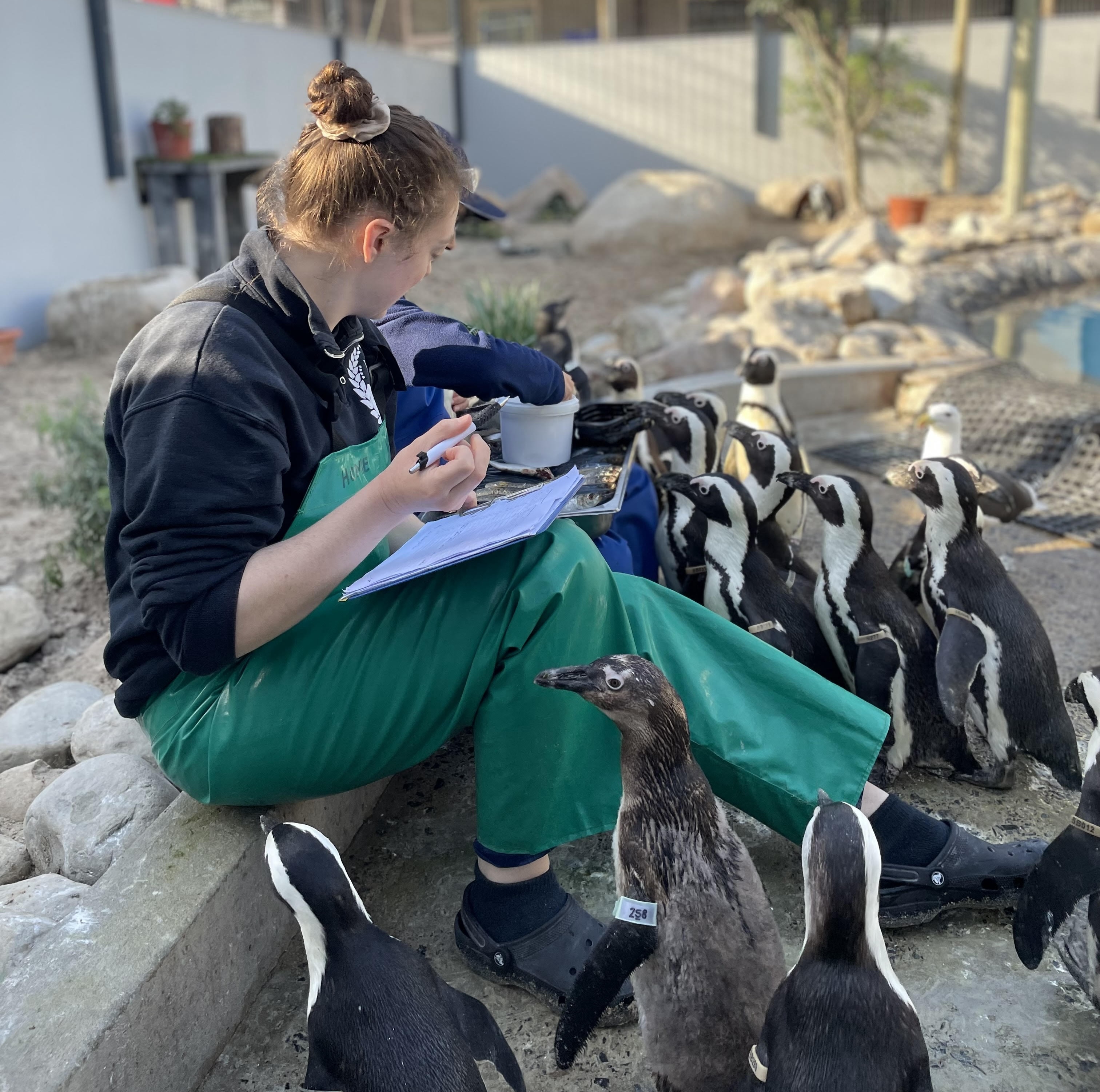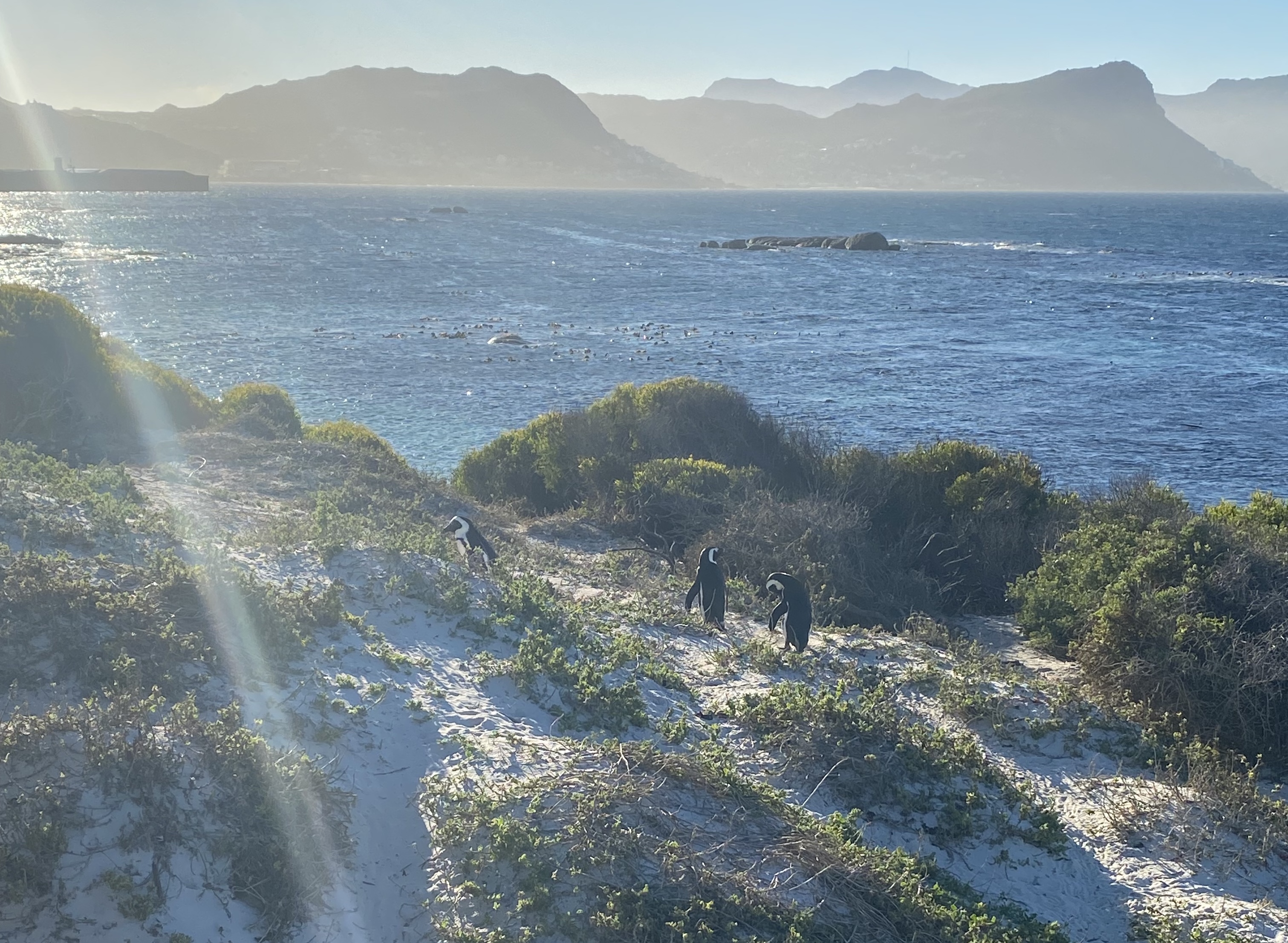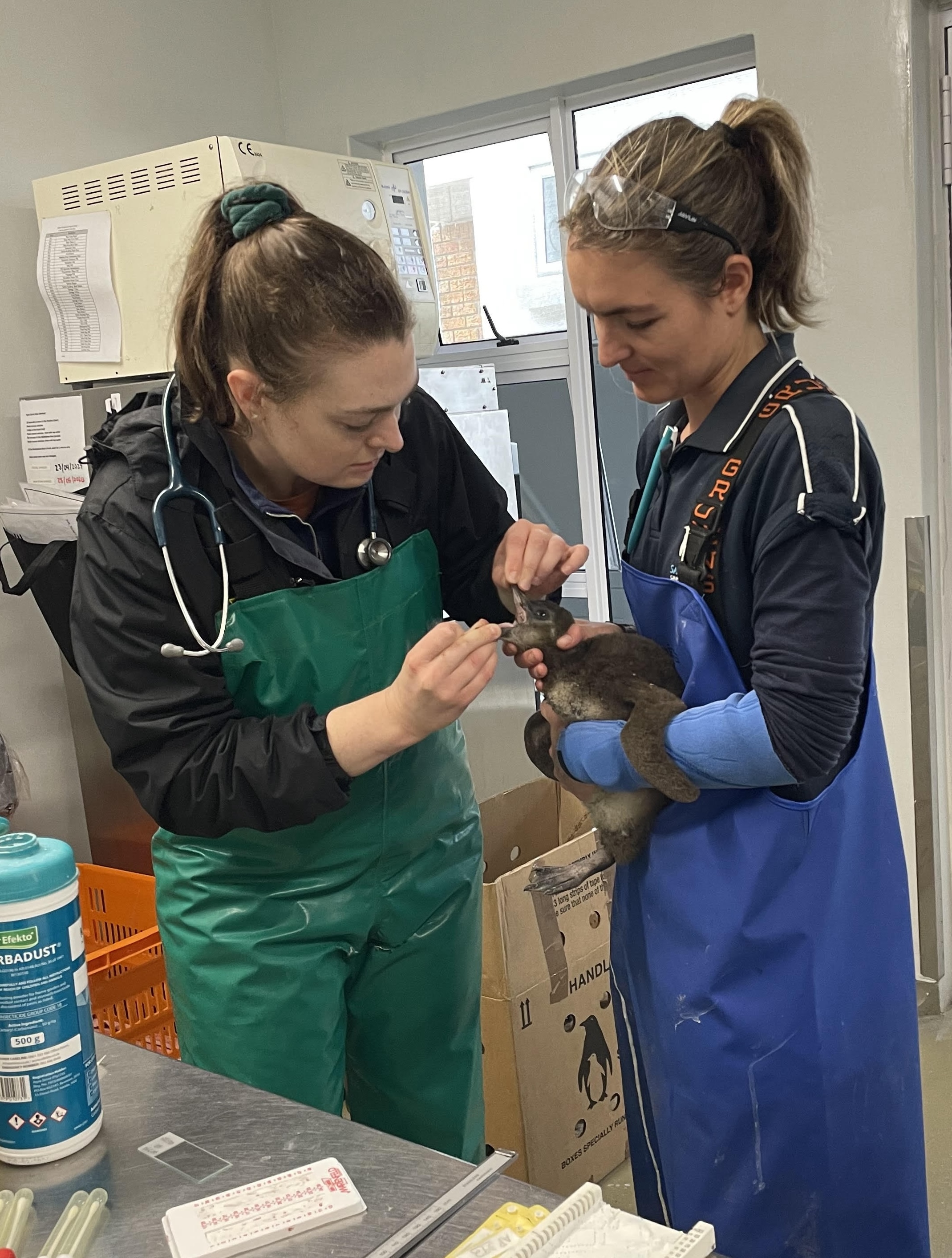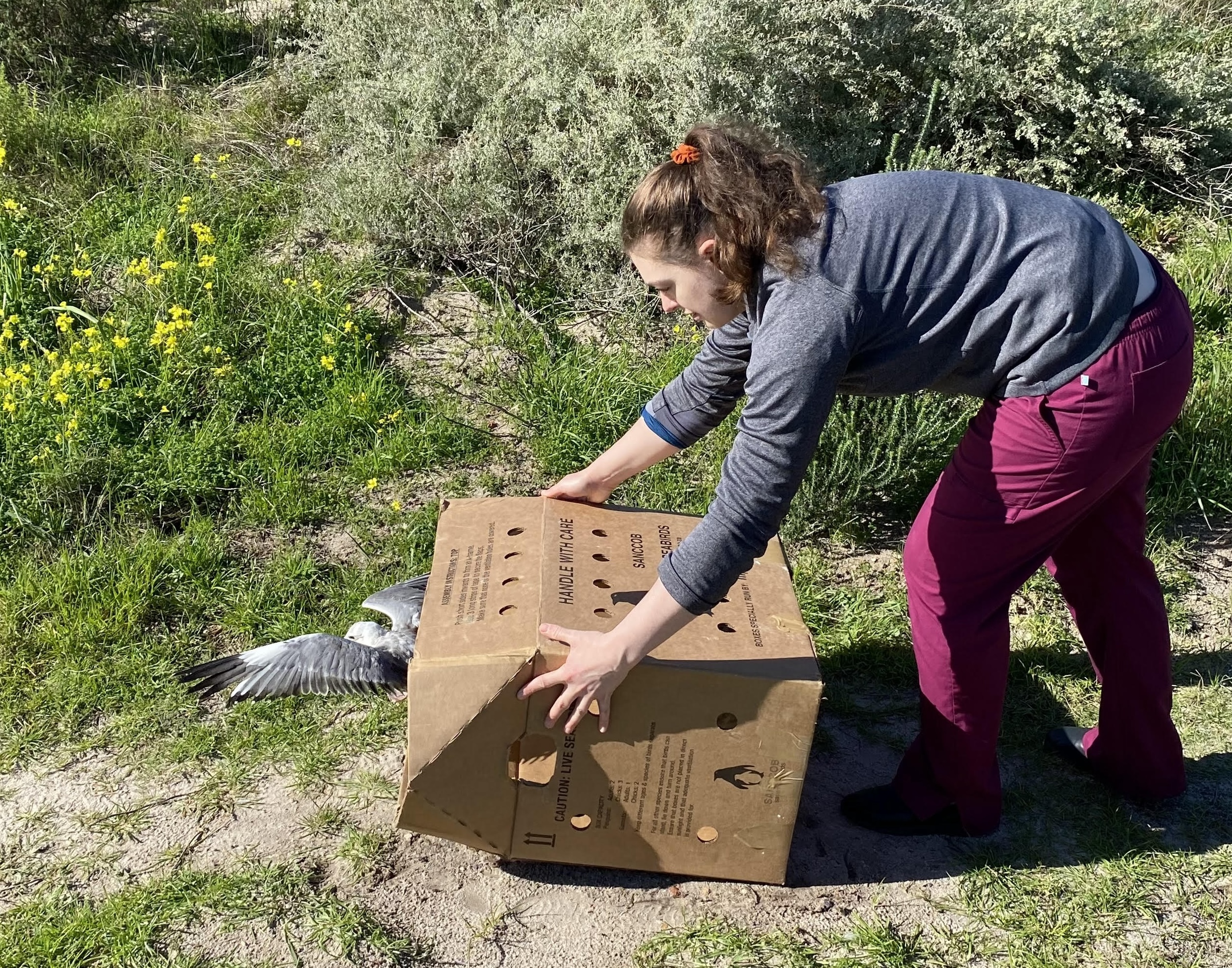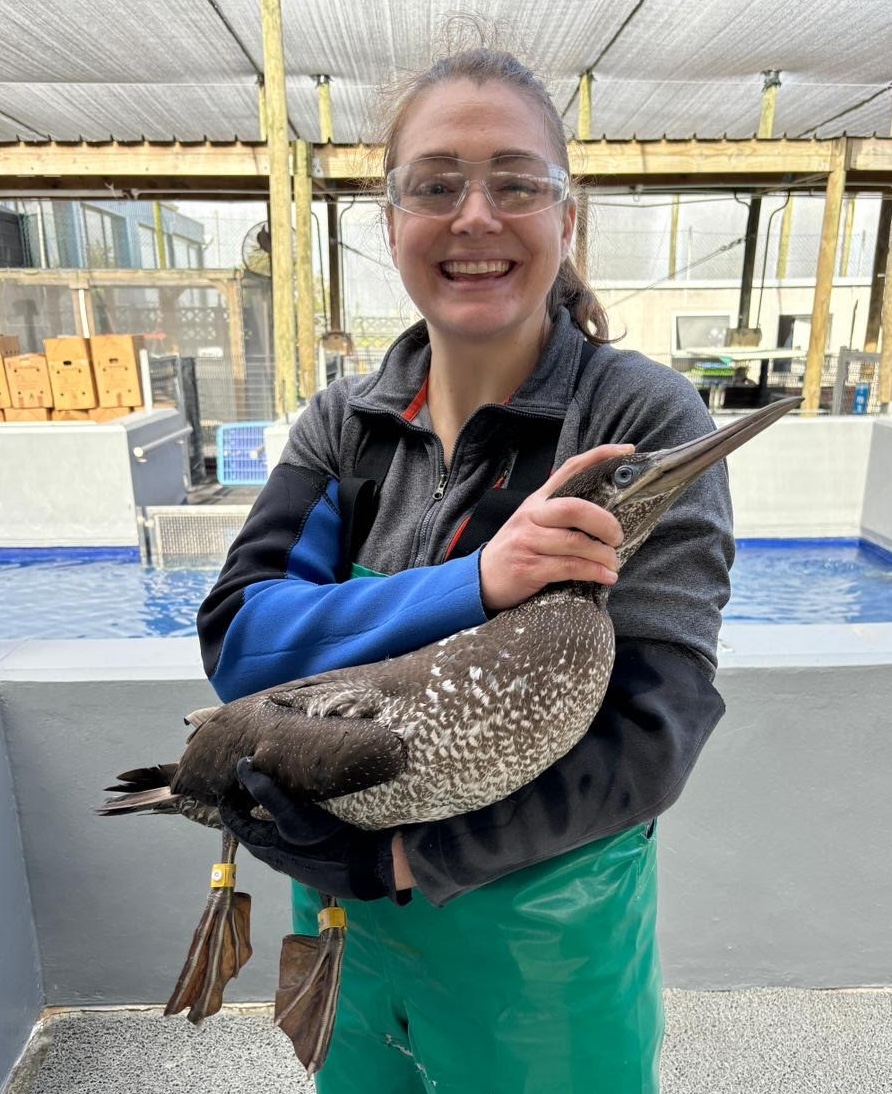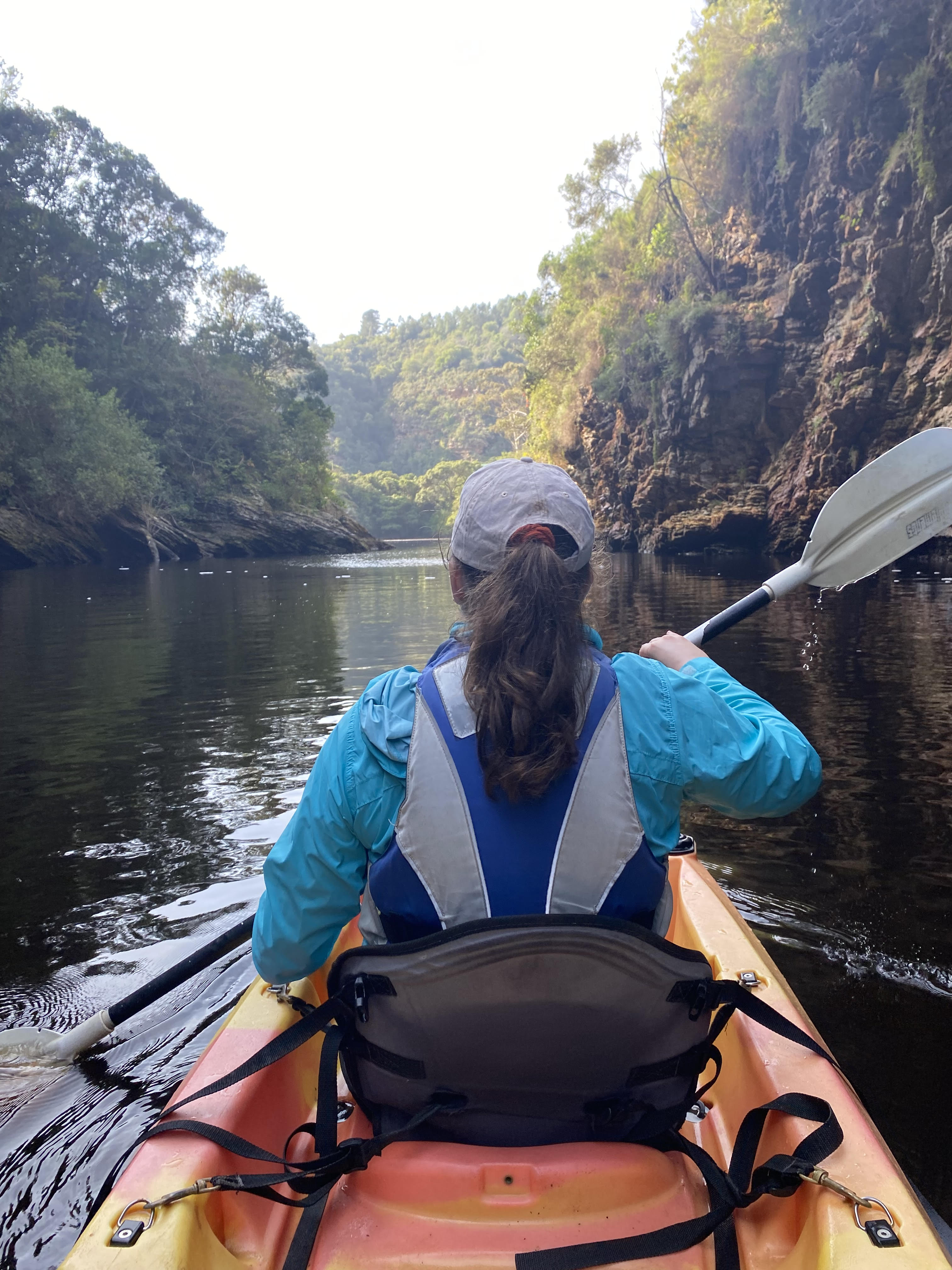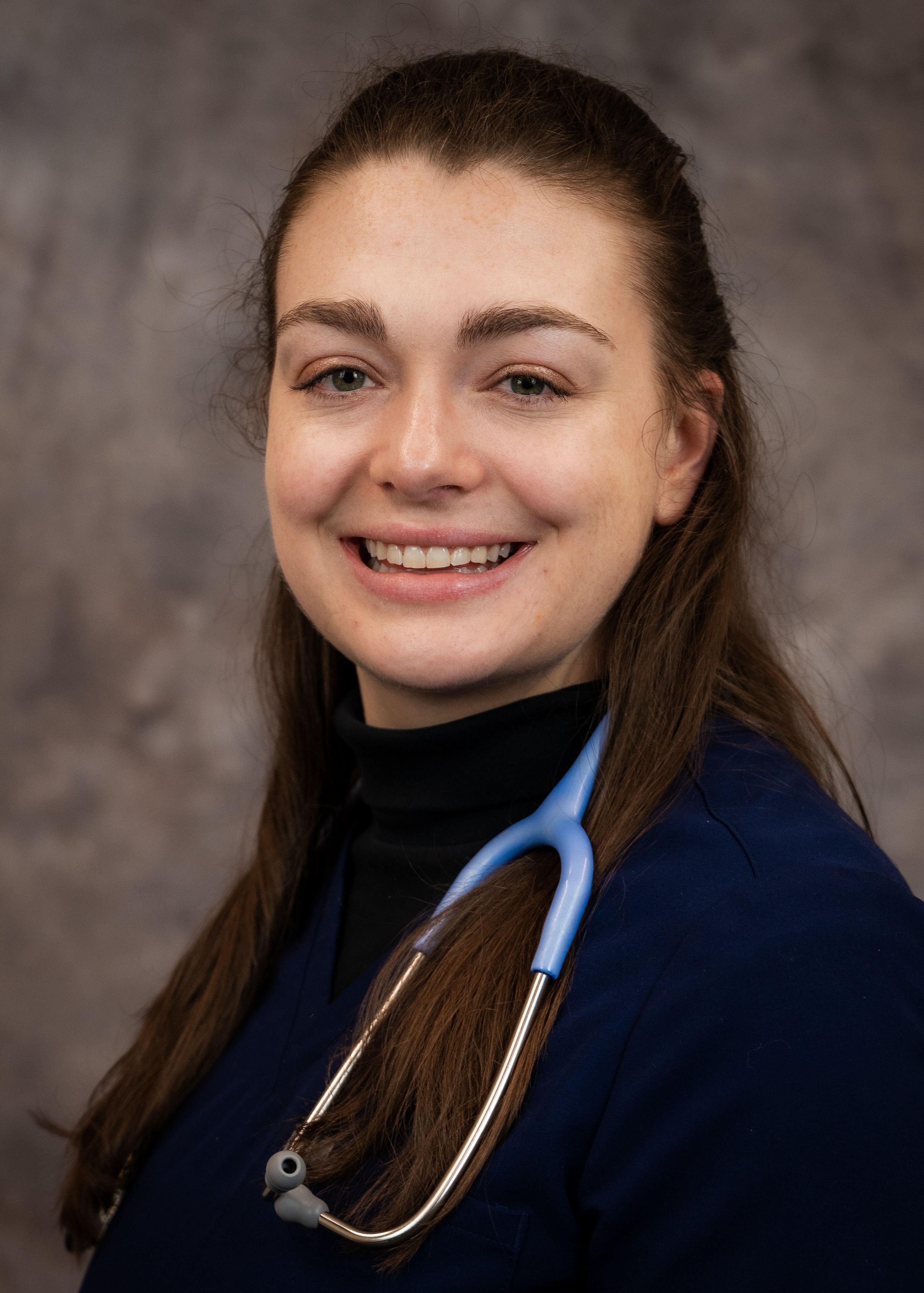As Far as the Eye Can Sea: Clinical Interventions for Threatened Seabird Species in Southern Africa
By Kathleen Wendover, Cornell DVM ’26
Since deciding to pursue veterinary medicine, I have been interested in conservation medicine, with a focus on improving the health of wildlife populations. More recently, my interest has expanded to aquatic medicine, particularly in terms of how marine life can serve as an indicator of the health of the broader ecosystem.
During the summer of 2024, I was thrilled to spend eight weeks pursuing these interests and broadening my cultural perspective at the Southern African Foundation for the Conservation of Coastal Birds (SANCCOB). SANCCOB is a truly unique facility in Cape Town, South Africa that rehabilitates a variety of seabirds, including the critically endangered African penguin, which comprised about half of their seabird admissions during 2022 and 2023. Their conservation work— whether clinical, research, or policy-related—has a critical impact on wildlife populations and closely aligns with my career aspirations as a wildlife veterinarian.
I first heard about SANCCOB through fellow Cornell student Reiss Gidner, DVM ’25, who spent time there during the summer of 2023. Learning about SANCCOB’s vital work in preserving wild seabird populations, I knew that a clinical experience with this organization would provide an invaluable opportunity to contribute to important conservation efforts.
Thanks to the College of Veterinary Medicine’s Expanding Horizons International Education Program, I joined the SANCCOB veterinary team and worked alongside clinical veterinarian Dr. David Roberts, as well as seabird rehabilitators Jade Sookhoo and Michelle Liebenberg. Additionally, I spent time observing and assisting other staff members and volunteers.
Hands-On Conservation Medicine
My goals were to expand my knowledge and skills in conservation medicine and contribute meaningfully to SANCCOB’s clinical workload. I aimed to better understand how clinical information is collected and used to assess the health of wildlife populations, how rehabilitation and release decisions are made, and what factors may hinder these efforts. Additionally, I sought to develop my skills in avian medicine, particularly with seabirds, as I had limited prior experience with these species.
I was fortunate to have the chance to participate in all aspects of clinical work at SANCCOB, from bird admissions and routine procedures to final assessments before release. This included assisting with or conducting admission exams, collecting blood as well as tracheal and cloacal swab samples to test for avian influenza, administering treatments, taking radiographs, helping with procedures, and monitoring anesthesia. One particularly exciting day involved helping with multiple surgeries, aiding in a blood transfusion, handling various birds (including a penguin chick), admitting a southern giant petrel, and drawing blood from a brown skua.
These hands-on experiences allowed me to apply my learning in real-time, especially during high-demand periods for the veterinary team. My contributions helped the team deal with the influx of bird admissions and high caseloads, allowing me to make a meaningful impact on SANCCOB’s work. My work also gave me a chance to treat avian species that are unique to the region and to cultivate skills in avian medicine as I learned about tailoring care to various species. I worked with endangered species including the African penguin, Cape gannet, Cape cormorant, and bank cormorant. I also gained valuable experience with other avian species including the reed cormorant, southern giant petrel, brown skua, lesser flamingo, kelp gull, and Hartlaub’s gull.
In addition to clinical work, I trained in seabird handling, feeding, husbandry, and rehabilitation. Interweaving these facets of clinical treatment and rehabilitation deepened my understanding of the factors that impact seabird health and our patients’ viability for release.
Sharing Knowledge and Outreach
Through my experience, I observed the various ways in which information from clinical cases was collected and disseminated to better understand the health of wildlife populations. Admission of seabirds included documenting injuries, collecting blood samples, and performing radiographs. These findings, along with data on trends in injuries and health conditions, help identify environmental threats to seabird populations. For example, Dr. Roberts and the veterinary and rehabilitation teams can differentiate between injuries caused by predators such as caracals, sharks, and seals based on the location and pattern of a bird’s physical injuries.
The clinical and postmortem findings are disseminated among SANCCOB staff and seabird and penguin conservationists across South Africa and Namibia. Information is shared in monthly veterinary reports, weekly rehabilitation progress meetings at SANCCOB, and larger workshops or seminars. During my first week, I attended a workshop reviewing findings on the predation of African penguins. Hearing presentations from penguin conservationists throughout the region, including researchers from SANCCOB, enriched my understanding of the widespread threats faced by wild penguin populations.
From these initiatives, I learned the importance of effective outreach. By engaging with visiting professionals and students, I gained a deeper understanding of the specialized knowledge cultivated across different sectors of the veterinary and conservation fields. Overall, I recognized that global knowledge-sharing is essential in addressing international conservation challenges.
Cultural Immersion and Professional Growth
This experience pushed me outside of my comfort zone, boosting my confidence as a veterinary professional and broadening my cultural perspective. Interacting and having meaningful conversations with South Africans helped me understand cultural norms. Adapting to clinical practices that differed from those in the U.S. instilled newfound confidence in my ability to thrive in diverse environments as a veterinarian.
Living and working in Cape Town for two months developed my understanding of South African cultural practices in veterinary medicine and daily life. In my free time, I explored the city and the Western Cape, visiting natural landscapes like Table Mountain, historical sites like Robben Island, and cultural attractions like the Zeitz Museum of Contemporary Art Africa. Experiencing these diverse aspects of life in Cape Town gave me a better appreciation for the city’s dynamic nature.
In addition to exploring Cape Town, I also embarked on tours to more remote destinations in the Western Cape such as Cape Point, the Cape of Good Hope, Simon’s Town, Kalk Bay, and various stops along the Garden Route. These trips showcased the expansive natural beauty of South Africa and highlighted the cultural differences among smaller communities.
My time abroad helped me to grow professionally and personally in ways that I could not have previously imagined. The lessons and skills I learned greatly expanded my toolkit for my career and made me a stronger advocate for the conservation of wildlife. As my experience came to a close, I felt a mix of gratitude, accomplishment, and excitement for the future. I am grateful to Dr. David Roberts, Jade Sookhoo, Michelle Liebenberg, and the rest of the SANCCOB team for teaching me so much and making this experience unforgettable. I would also like to thank the College of Veterinary Medicine’s Expanding Horizons International Education Program for funding this life-changing opportunity.
Kathleen Wendover is a third-year (Class of 2026) DVM student at the Cornell University College of Veterinary Medicine. She obtained a BA in Biochemistry and Molecular Biology in 2018 from Hendrix College in Conway, Arkansas. She aims to pursue a career in wildlife conservation focused on population health.
Photos provided by Kathleen Wendover.

